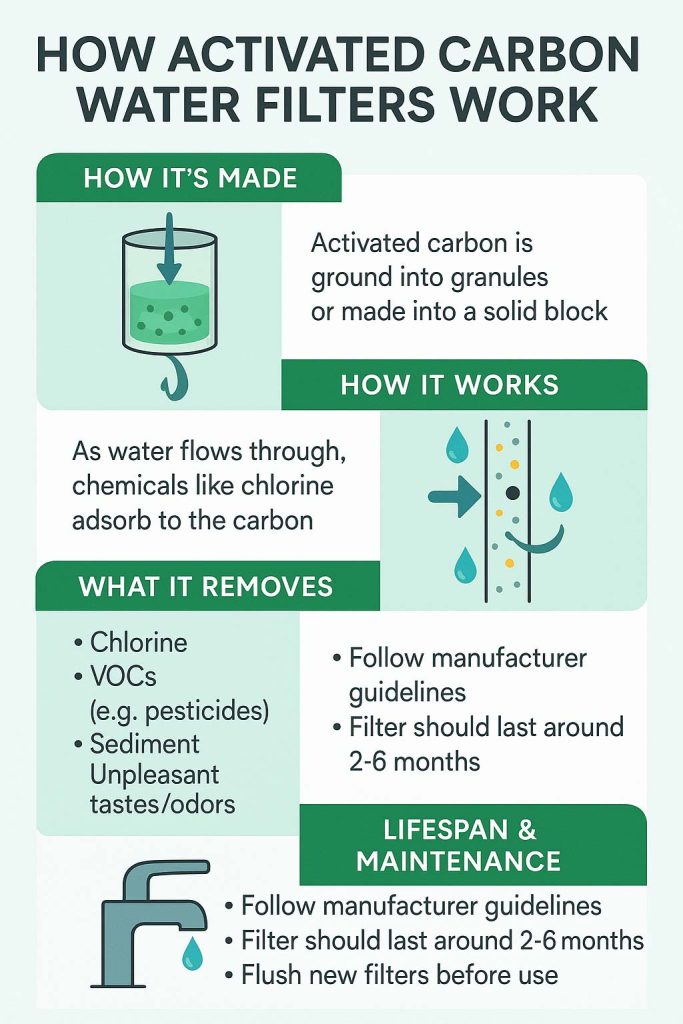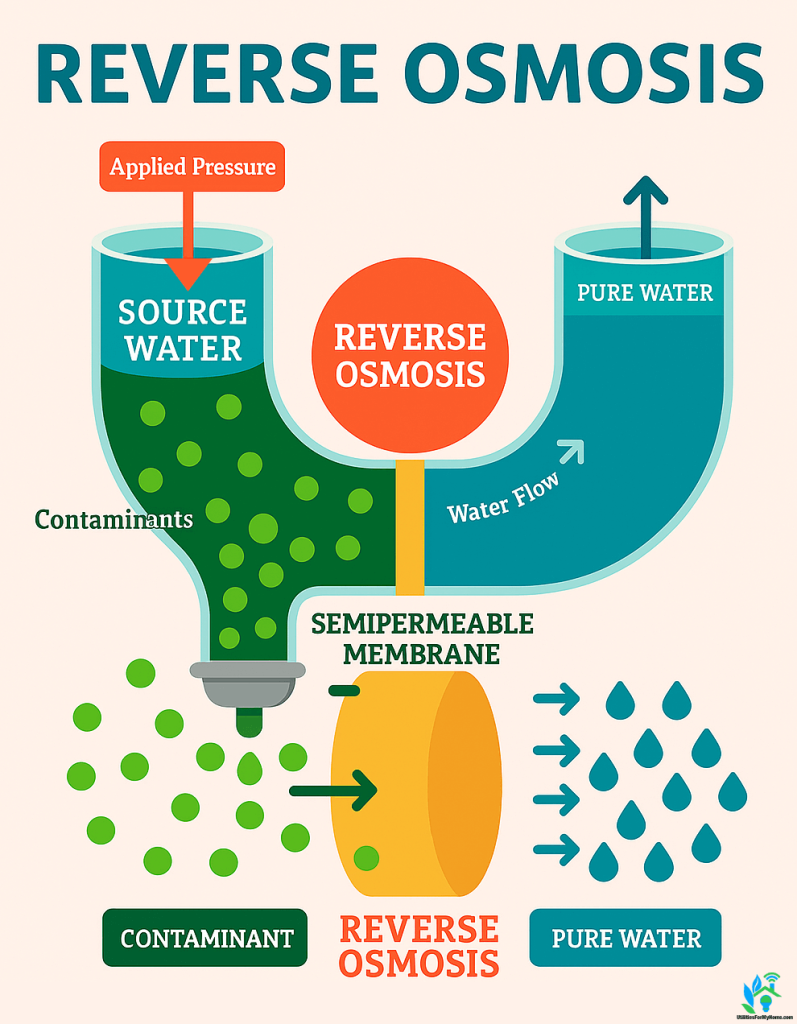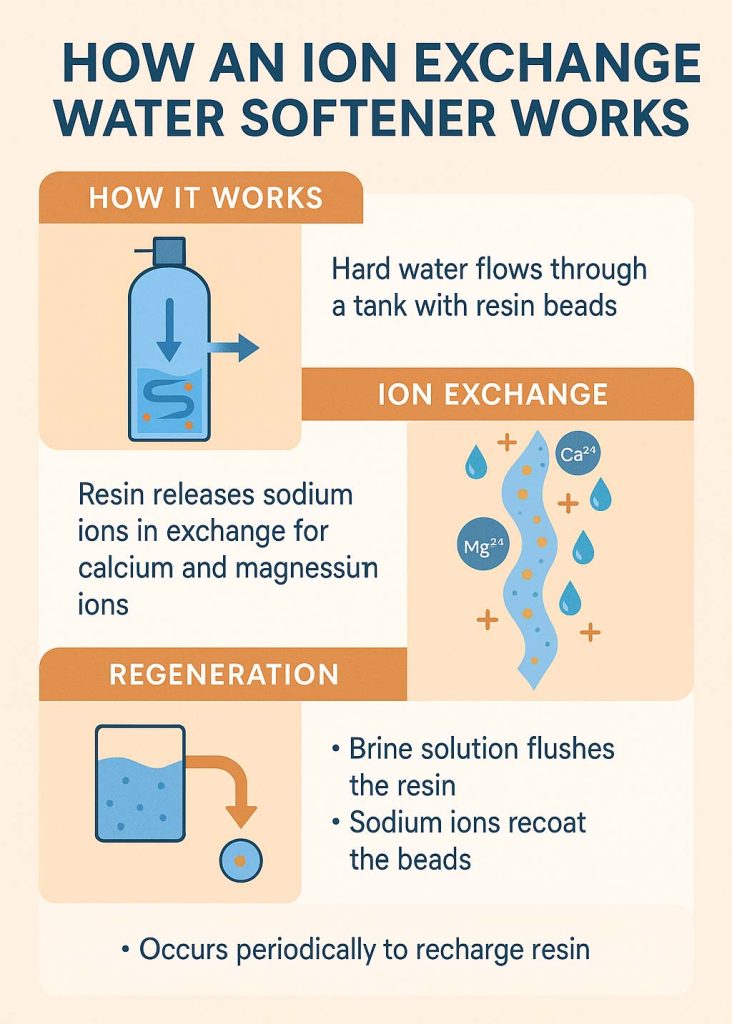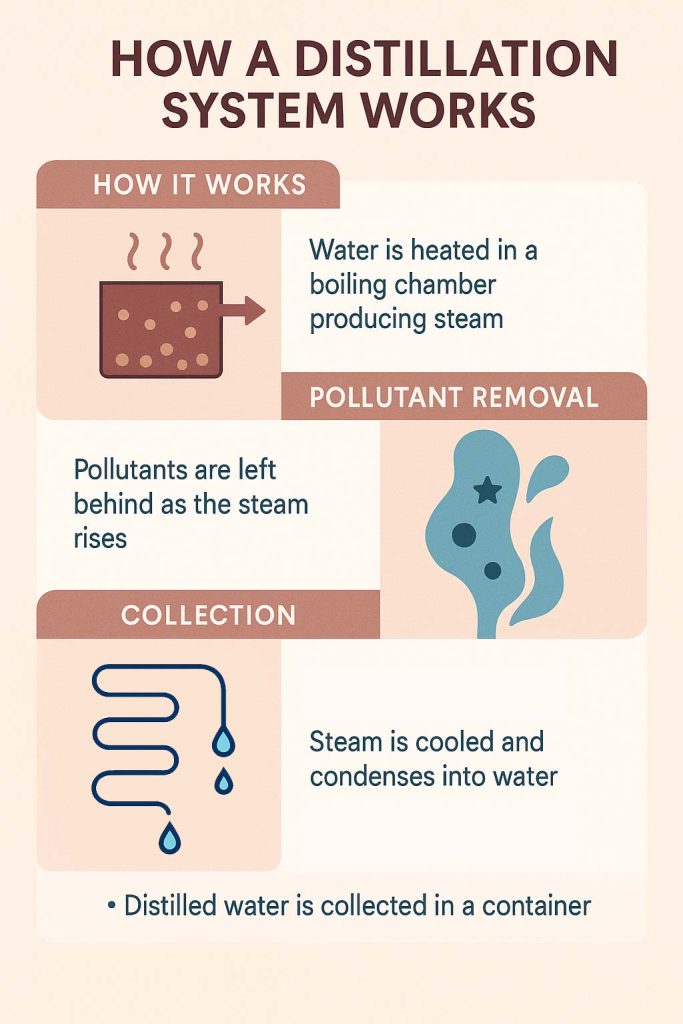Key Takeaways
- Carbon filters improve taste and remove chlorine, reverse osmosis provides the purest water, ion exchange softens hard water, and whole-house systems ensure clean water throughout your home.
- Some filters, like carbon and RO systems, require frequent replacements, while whole-house and distillation systems need periodic cleaning or professional servicing. Costs range from affordable pitchers to high-end whole-house solutions.
- Testing your water helps determine which contaminants are present, allowing you to choose the right filtration system for your home.
- Removing contaminants protects your health, enhances the taste of drinking water, and prevents scale buildup that damages appliances and plumbing.
Clean water is essential for your health and home, but not all water is created equal. Depending on where you live, your tap water might contain chlorine, lead, pesticides, bacteria, or even minerals that cause buildup in your pipes and appliances. Luckily, there are several water filtration options available to help you get safe, clean, and great-tasting water.
Carbon-Based Filters

Water that tastes or smells off can be a big turnoff, and that’s where carbon-based filters come in. These filters are one of the most common and affordable ways to improve drinking water quality. They use activated carbon, a highly porous material, to trap impurities and contaminants, making your water fresher and better-tasting.
How They Work: Carbon filters use activated carbon to absorb contaminants from water. These filters can be found in pitcher filters, faucet attachments, and under-sink systems.
What They Filter: Chlorine, sediment, volatile organic compounds (VOCs), some heavy metals, and bad tastes/odors.
Pros:
- Affordable and widely available
- Improves taste and smell
- Easy to install and maintain
Cons:
- Doesn’t remove dissolved solids, bacteria, or heavy metals like lead and arsenic
- Needs frequent filter changes to stay effective
Maintenance: Carbon filters typically need to be replaced every 2 to 6 months, depending on usage and water quality.
Cost: $20-$100 for pitchers and faucet filters, $100-$300 for under-sink systems.
Best For: People looking to improve taste and remove chlorine or minor impurities from their drinking water without a complicated setup.
Find the best for carbon filters for your home.
Reverse Osmosis (RO) Systems

If you want the purest water possible, reverse osmosis (RO) is one of the most effective filtration methods available. RO systems remove a wide range of contaminants, making them a great option for people with serious water quality concerns. While they do require some maintenance and waste some water in the process, they provide exceptional filtration results.
How They Work: RO systems push water through a semipermeable membrane, removing tiny contaminants at a molecular level. These systems often have multiple filtration stages, including carbon and sediment filters.
What They Filter: Heavy metals (lead, arsenic), fluoride, nitrates, bacteria, viruses, and dissolved salts.
Pros:
- Removes a wide range of contaminants
- Great for areas with poor water quality
- Improves taste significantly
Cons:
- Wastes water (for every gallon filtered, a gallon or more is wasted)
- Removes beneficial minerals along with contaminants
- Requires installation and occasional maintenance
Maintenance: RO membranes last about 2-3 years, but pre-filters and post-filters typically need replacing every 6-12 months.
Cost: $200-$600 for under-sink systems, $1,000-$4,000 for whole-house systems.
Best For: Households concerned about heavy metals, nitrates, and other harmful contaminants, or those wanting the purest drinking water possible.
Find the Best Reverse Osmosis Systems for Your Home
Ion Exchange (Water Softeners)

Hard water can be a real nuisance, leaving behind limescale on appliances, drying out your skin, and making soap less effective. Ion exchange, commonly known as water softening, is a solution that helps reduce these hard minerals, making your water gentler on your home and body.
How They Work: These systems replace hard minerals (like calcium and magnesium) with sodium or potassium ions, softening the water.
What They Filter: Primarily hard water minerals, some heavy metals.
Pros:
- Prevents scale buildup in pipes and appliances
- Makes soaps and detergents more effective
- Improves skin and hair health by reducing mineral deposits
Cons:
- Doesn’t remove bacteria, chlorine, or chemical contaminants
- Adds sodium to water (may not be ideal for those on low-sodium diets)
- Requires periodic maintenance and salt refills
Maintenance: Ion exchange systems require salt refills every few weeks and resin bed cleaning every 6-12 months.
Cost: $500-$2,500 for whole-house softeners.
Best For: Homes with hard water that causes buildup on faucets, dishes, and appliances.
Find the Best Ion Exchange Systems for Your Home
Distillation Systems

Distillation is one of the oldest and most reliable methods of water purification. By turning water into steam and then condensing it back into liquid form, distillation effectively removes many contaminants, making it a great option for people who want an all-natural purification process.
How They Work: Water is boiled, and the steam is captured and condensed back into liquid form, leaving most contaminants behind.
What They Filter: Heavy metals, bacteria, viruses, and many chemical contaminants.
Pros:
- Highly effective at removing contaminants
- Works without filters that need regular replacing
- Removes bacteria and viruses naturally
Cons:
- Energy-intensive process
- Slow filtration speed
- Removes beneficial minerals, which can make water taste flat
Maintenance: Distillers need regular cleaning to remove mineral buildup, typically every 1-2 months.
Cost: $100-$500 for countertop distillers.
Best For: People who want a chemical-free purification method and don’t mind the slower process.
Find the Best Water Distillation System for Your Home
Whole House Filtration Systems
If you want clean water throughout your entire home, not just for drinking but also for bathing, cooking, and washing, then a whole-house filtration system might be the best choice. These systems ensure that every tap in your home delivers clean, filtered water, reducing exposure to harmful contaminants beyond just what you drink.
How They Work: Installed at the main water line, these systems filter all the water entering a home.
What They Filter: Depends on the system, but can include sediment, chlorine, heavy metals, and more.
Pros:
- Provides clean water to every faucet and appliance
- Reduces exposure to contaminants in showers and laundry
- Improves the lifespan of plumbing and appliances
Cons:
- Can be expensive upfront
- Requires professional installation
- Filter type needs to be chosen carefully based on water quality concerns
Maintenance: Whole house filters vary in lifespan; sediment filters may need replacing every 6-12 months, while carbon filters last 1-3 years. Some advanced systems require periodic professional servicing.
Cost: $800-$5,000 depending on system complexity.
Best For: Homes with overall water quality concerns, well water users, and those who want clean water for bathing, cooking, and drinking.
Find the Best Whole Home Filters for Your Home
When to Use Which Water Filter?
Choosing the right water filter depends on what’s in your water! Activated carbon filters are great for improving taste and removing chlorine, pesticides, and some organic chemicals, perfect for city water. Reverse osmosis (RO) systems are the heavy hitters, tackling nearly everything from lead and arsenic to nitrates and PFAS, making them ideal for wells or areas with serious contamination. Ion exchange filters, like water softeners, specialize in removing hardness minerals (calcium/magnesium) and can sometimes reduce heavy metals, but they won’t help with microbes or chemicals.
- Activated Carbon: Best for taste/odor, chlorine, and organic chemicals (e.g., pesticides, VOCs). Great for city water.
- Reverse Osmosis: The “heavy lifter”, removes almost all contaminants (metals, nitrates, fluoride, PFAS). Ideal for well water or high-risk areas.
- Ion Exchange: Specialized for hard water (calcium/magnesium). Some systems target heavy metals. Often paired with carbon or RO.
| Contaminant | Activated Carbon | Reverse Osmosis (RO) | Ion Exchange |
|---|---|---|---|
| Chlorine | |||
| Lead | |||
| Mercury | |||
| PFAS (“Forever Chemicals”) | |||
| Pesticides/Herbicides | |||
| Pharmaceuticals | |||
| Nitrates/Nitrites | |||
| Arsenic | |||
| Calcium/Magnesium (Hardness) | |||
| Bacteria/Parasites | |||
| Sediment/Rust | |||
| Fluoride | |||
| VOCs (e.g., Benzene) |
* Ion exchange can remove heavy metals like lead/mercury if designed for it (e.g., some water softeners), but standard systems focus on hardness minerals.
Many households combine filters (e.g., carbon + RO) for broad protection.
Choosing the Right Filter for You
When selecting a water filtration system, here are a few things to consider:
- Your water quality: Get a water test to identify contaminants or check water quality reports from the EPA.
- Your household needs: Do you need filtration for drinking water only, or for the whole house?
- Maintenance and cost: Some systems require more upkeep than others, make sure you are comfortable with the requirements of each.
Whatever system you choose, filtering your water can provide peace of mind and better health for you and your family. Clean water isn’t just a luxury, it’s a necessity!
FAQs About Water Filters
How often should I replace my water filter?
Is filtered water and purified water the same thing?
Can water filters make tap water safe to drink?
Why is my filtered water flowing slowly?
– Clogged filter (needs replacement).
– Low water pressure.
– Sediment buildup in the system.
Do water filters remove beneficial minerals?
Are pitcher filters as effective as under-sink systems?
About the Author
David has been an integral part of some of the biggest utility sites on the internet, including InMyArea.com, HighSpeedInternet.com, BroadbandNow.com, and U.S. News. He brings over 15 years of experience writing about, compiling and analyzing utility data.
